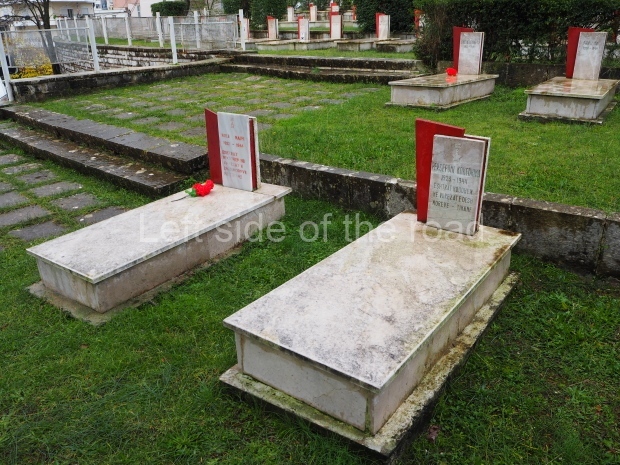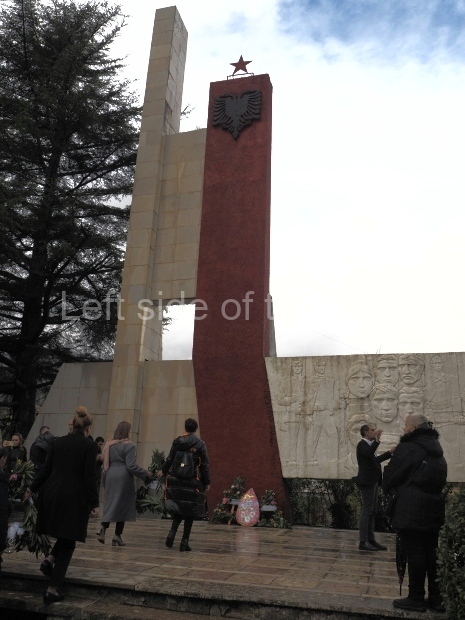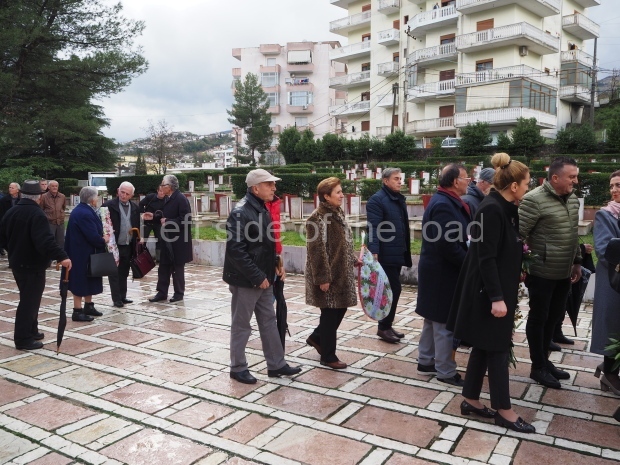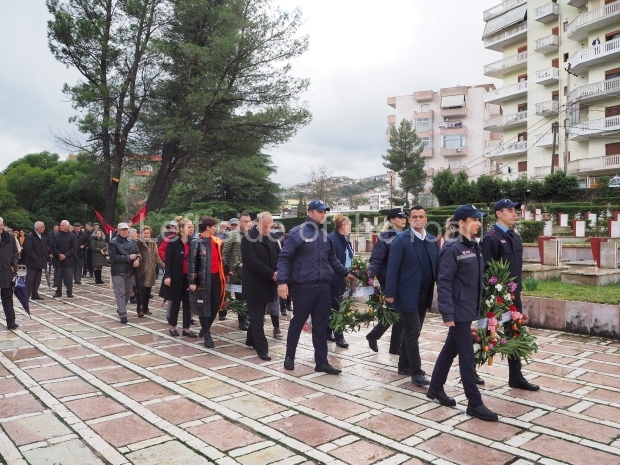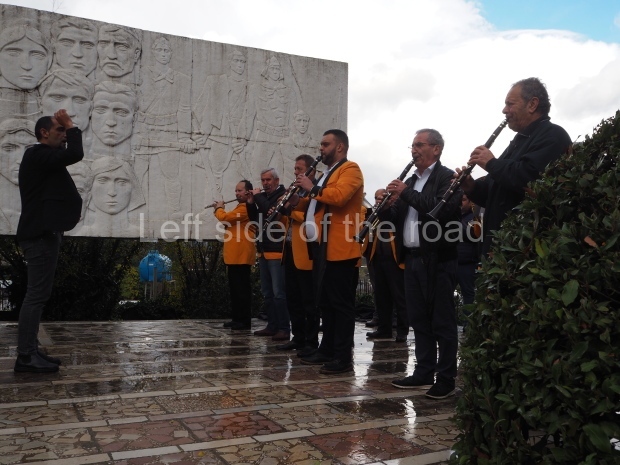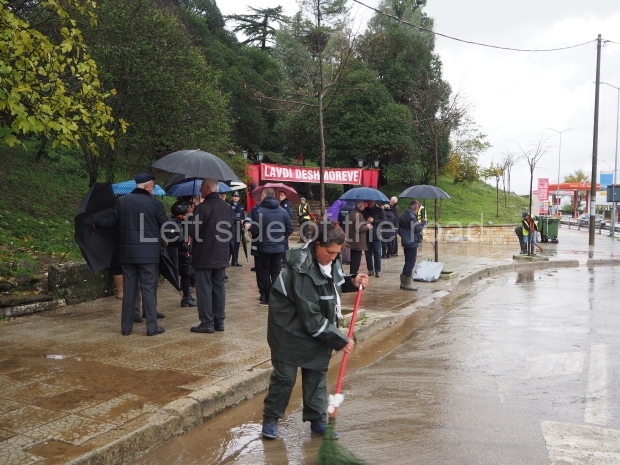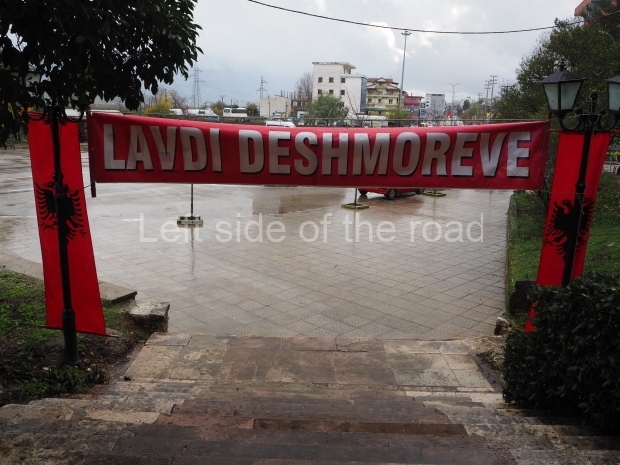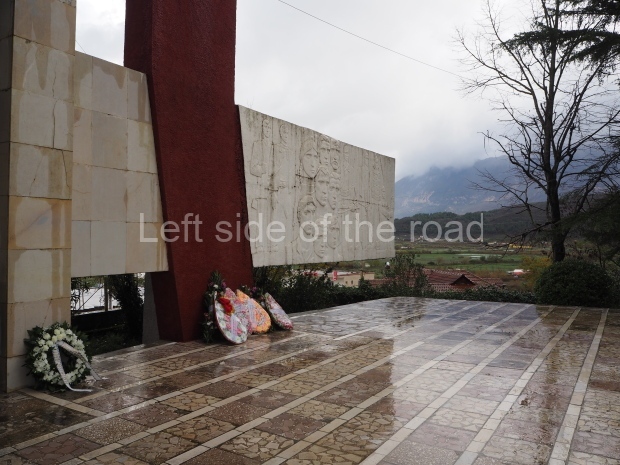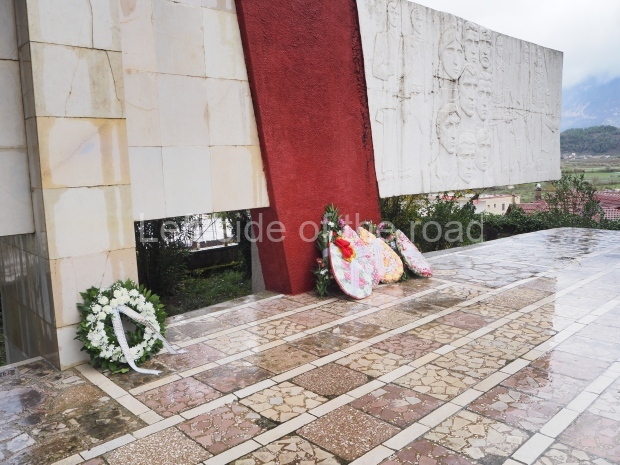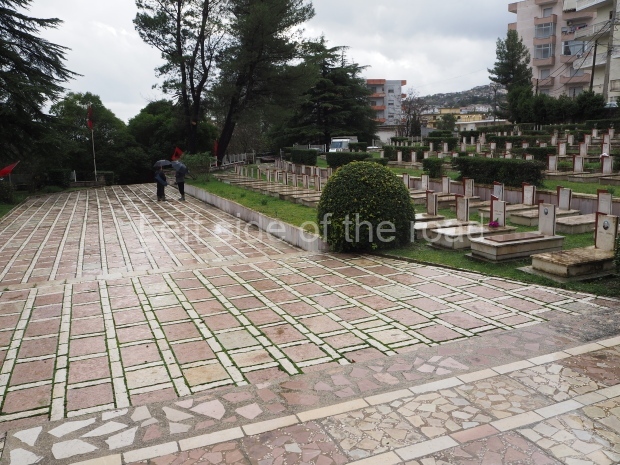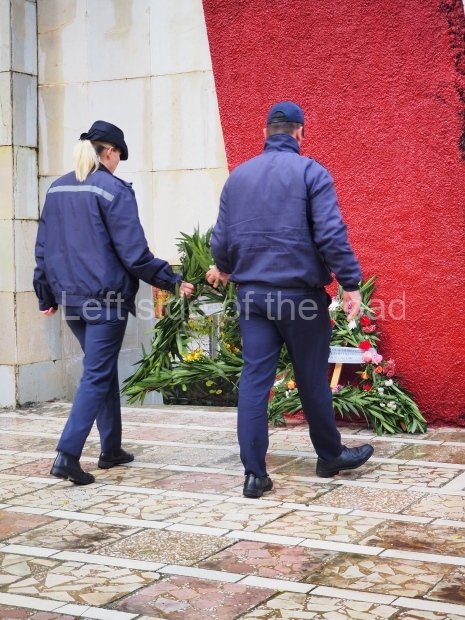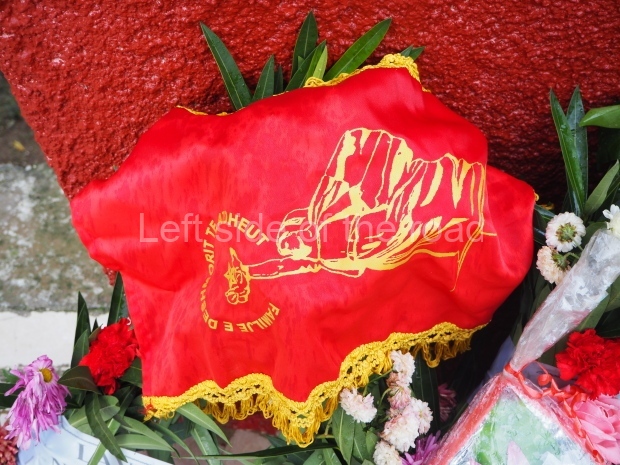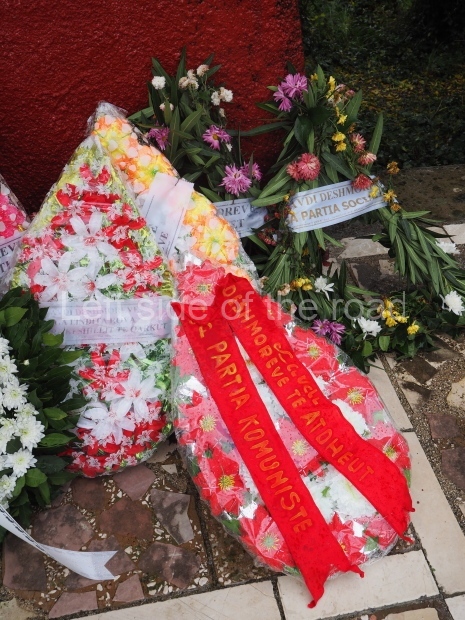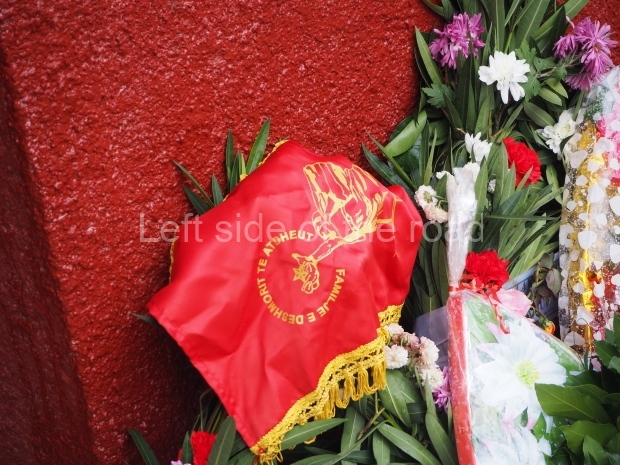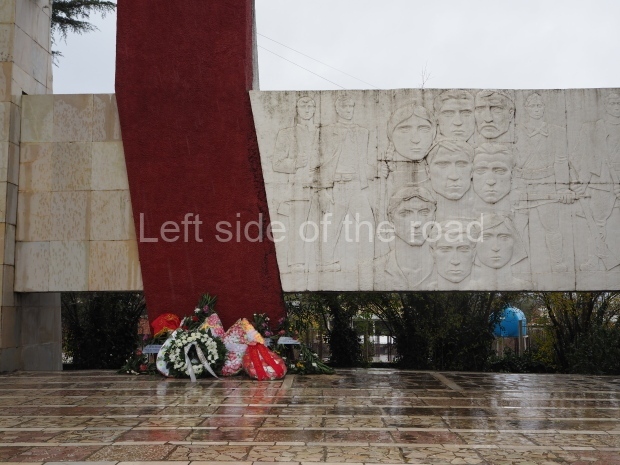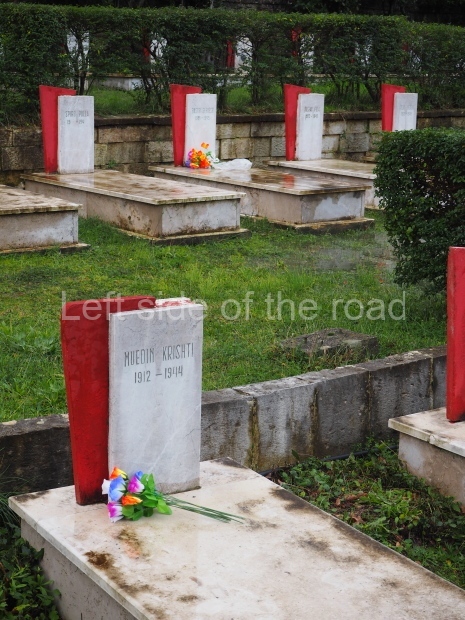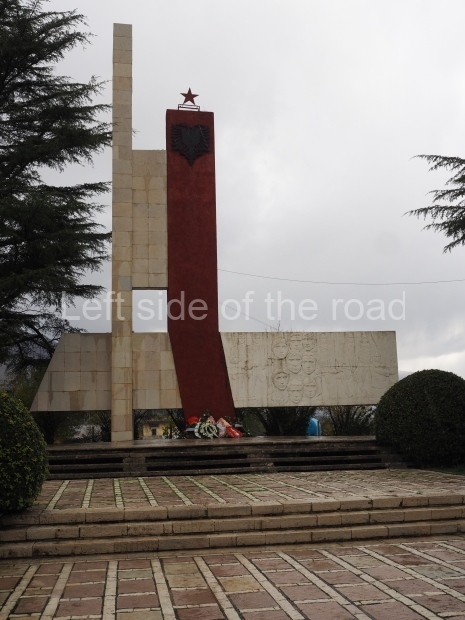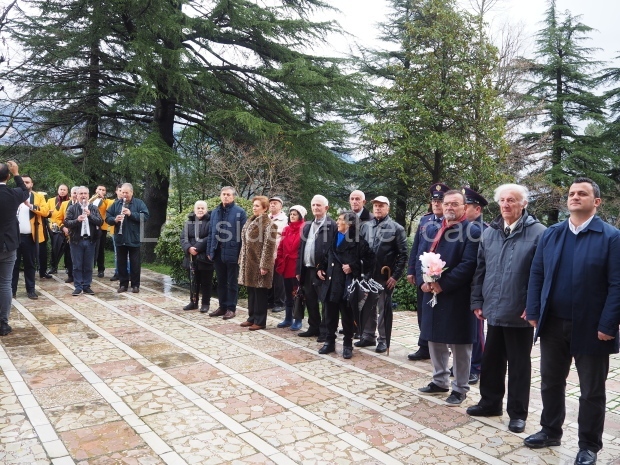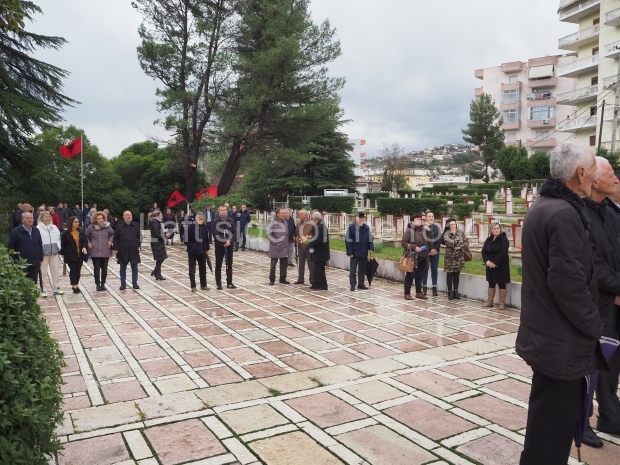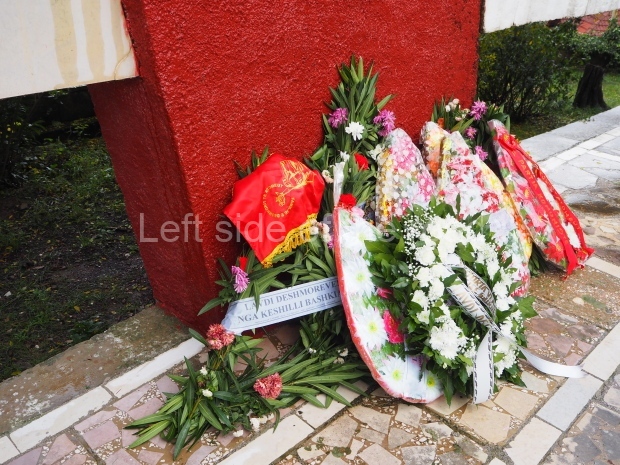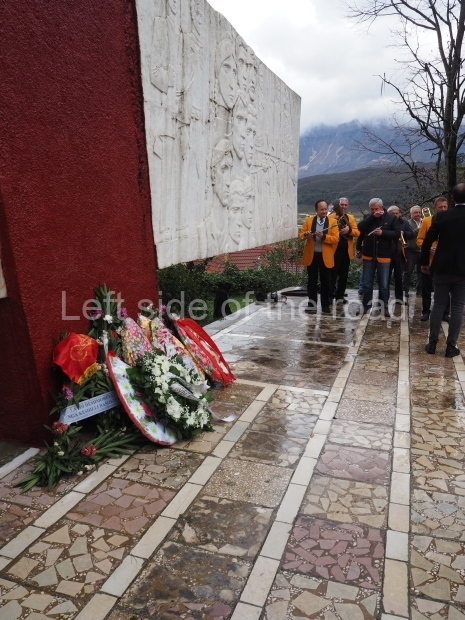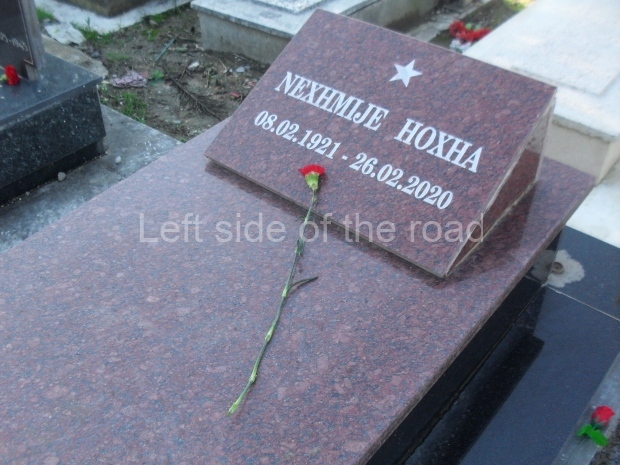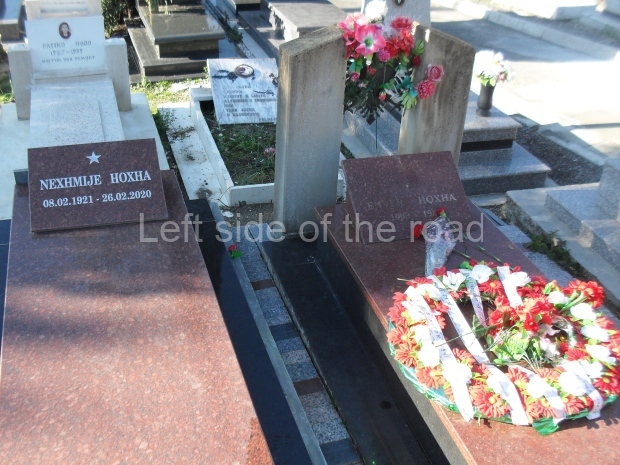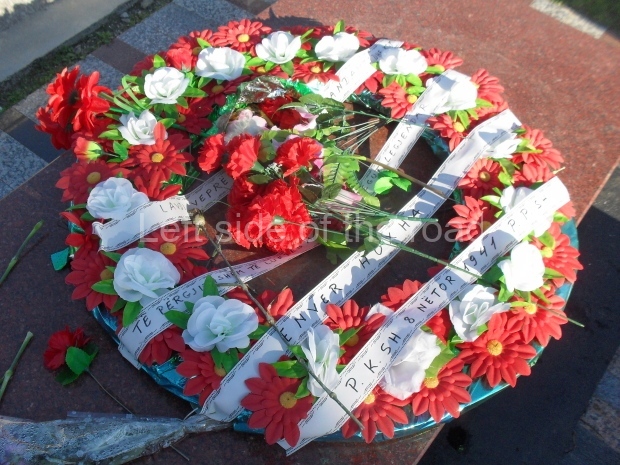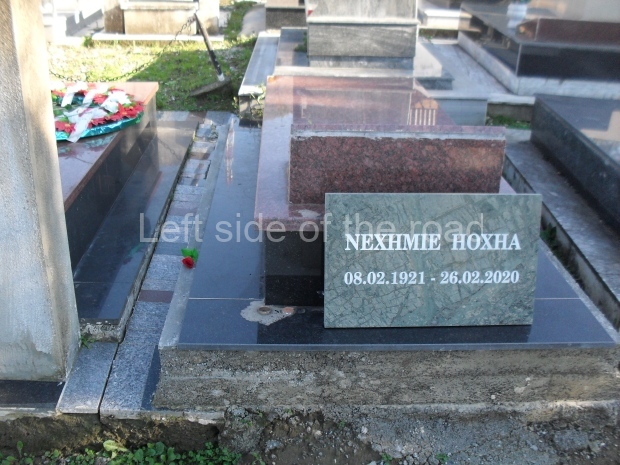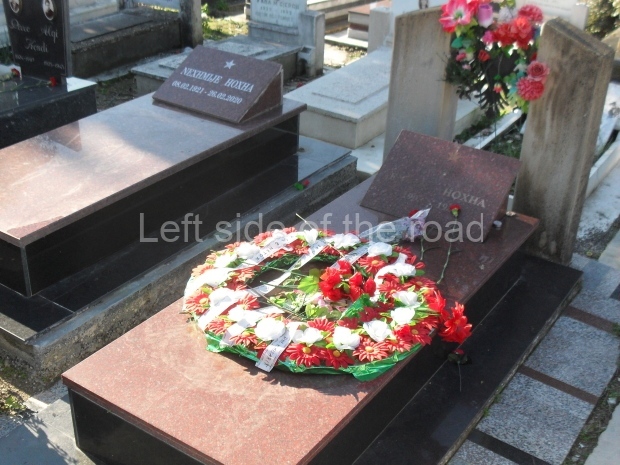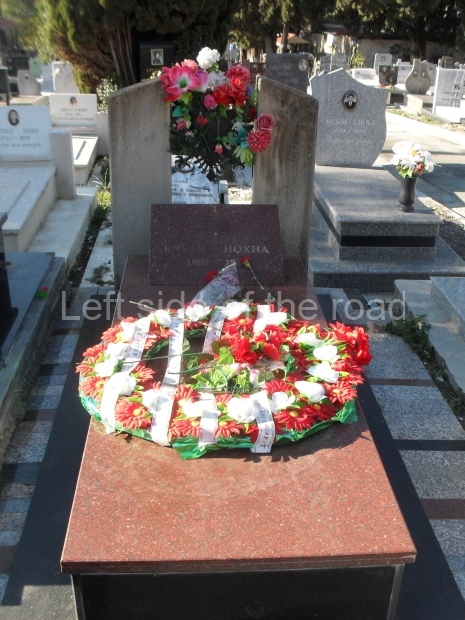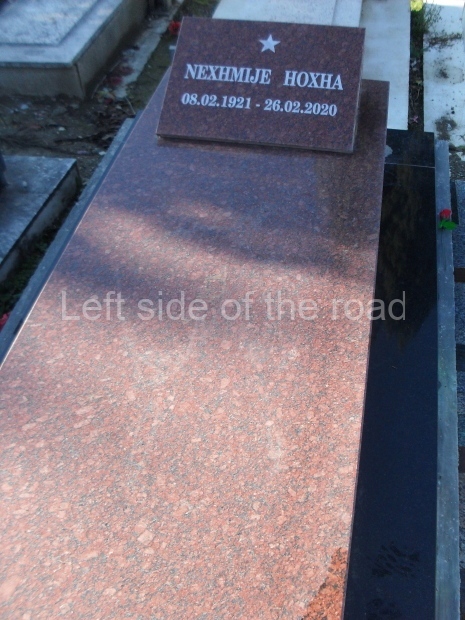Category Archives: Albania
Independence Day – 29th November 2021 – in Gjirokaster
More on the ‘Revolutionary Year’
Ukraine – what you’re not told
Independence Day – 29th November – in Gjirokaster
Albania celebrates two ‘independence’ days. The first, on 28th November, is the anniversary of when Albania ‘gained’ its independence from the Ottomans with the signing of an agreement in Vlora in 1912. But this was sham independence (although it was still celebrated during the Socialist period and Enver Hoxha was very much involved in the design of the huge lapidar to commemorate the event which exists in that city) as nothing significantly changed for the vast majority of the population. The second was much more meaningful and that occurred on the 29th November 1944. That was the date when the last of the Nazi invaders of the country were either dead or had surrendered.
There’s very much a political divide when it comes to celebrating these respective dates.
The ‘right’, the reactionaries, will make a big deal out of the 28th as all countries need something to which they can attach their identity. For them the period between 1944 and 1990 was a disaster as the Party of Labour of Albania led the people in the construction of Socialism and that necessarily meant stamping down on private wealth and selfishness. They will, therefore, ‘ignore’ any commemoration of the 29th.
The ‘left’ will probably celebrate both days but the one on the 29th will be of more significance. Much of what was gained in the country following that date in 1944 has now been lost. Even the ‘left’ governments that have been in power since 1990 have merely presided over the restoration of capitalism and all governments have effectively given up any independence the country had, either the 1912 version or the true independence of 1944 – to not even the highest bidder. Anyone, be it the European Union (EU), the North Atlantic Treaty Alliance (NATO), the various brands of mysticism or companies from anywhere in the capitalist world can come in and do whatsoever they like. The only response from the political parties (and, it must be said, the population in general) is ‘please sir, can we have some more?’
But, sadly, neither of these dates seem to be of any importance to the vast majority of the population. Certainly when it comes to attending any formal celebration.
In Gjirokaster, in 2021, the 28th involved a wreath laying ceremony at the lapidar to the Cajupis. These were independence fighters against the Ottomans in the 19th century. Even this innocuous lapidar was submitted to vandal attacks at some time after the victory of the counter-revolution in 1990 but a few years ago it was cleaned up and access to it made much easier so this is why the town now has a rallying point for pre-Socialist celebrations.
On the other hand the commemoration of the 29th takes place in the Martyrs’ Cemetery, which is on the edge of the new town, close to the north-south main road. This was the place where the commemoration of the 75th anniversary of the Liberation of the town took place on 18th September 2019.
In 2021 the commemoration was no more than a wreath laying ceremony – so not significantly different from the event the previous day. There were formal wreaths from the local municipality and a number of political parties on the ‘left’ – but nothing from the so-called ‘Democratic Party’, a bunch of fascist inclined individuals who regret that the Nazis lost the battle for Tirana. There were also a couple of individual offerings.
In the past, during the Socialist period, such events would have been crowded and highly organised. The tradition was that members of the Young Pioneers would be standing next to the (empty) tombs and would be charged with laying a single flower on each of them at one point in the ceremony. (Even though these monuments to those who died in the fight against fascism are called ‘cemeteries’ no bodies are interred there, the vast majority of those who died having done so high in the mountains throughout Albania, their remains being lost to nature.)
However, now at such events the individuals who receive a token of respect are only those who still have family members close by and who respect the sacrifice they made. This meant that only a handful of tombs received a floral tribute.
Amongst the ‘tombs’ are two of the young female Partisan fighters, Bule Naipi and Persefoni Kokedhima, who were murdered by the Nazis in a public execution on July 17th 1944, a few short months before the liberation of the town. These young women were 22 and 21 respectively. However, their sacrifice wasn’t remembered in any significant way with only a single flower being laid on Bule’s tomb.
And the ‘commemoration’ was over in less than 15 minutes – about the same time of the event the previous day.
One interesting thing that happened, when most people had left, was that a wreath laid by the local police was removed from the collection of wreaths at the centre of the lapidar and moved so that it stood alone. I assume some sort of political comment but don”t know exactly what.
I assume that such commemorations will take place in other Martyrs’ Cemeteries throughout the country but that could well be dependent upon which political faction controls the local municipality.
More on Albania …..
Nexhmije and Enver together in Kombinat
Ukraine – what you’re not told
Nexhmije and Enver together in Kombinat
Every time I’m in Tirana I try and make a visit to the cemetery on the western outskirts of the city where the remains of Enver Hoxha are buried. The area is known as Kombinat – Factory, after the huge Stalin textile factory that used to be exist in the zone. The main entrance used to be through the arch (which is really all that still exists of the factory) on the western side of the big square in front of the Bashkia. In the middle of this square there used to be a statue of Comrade Stalin, standing on a tall plinth. That particular statue was removed and placed behind the National Art Gallery in Tirana. (The Gallery is inaccessible at the moment, whilst the building undergoes refurbishment, so what will happen to those statues when the building reopens is not known.)
When Shoku Enver died in 1984 he was initially interred next to the statue of Mother Albania in the National Martyrs’ Cemetery in the hills above Tirana. As the reaction gained more force he was removed and placed in the city’s municipal cemetery. His place beside the symbol of a free and independent nation being taken by a mixture of fascists, renegades, collaborators and ‘country-sellers’.
The grave is not too difficult to find and directions of how to get to Kombinat, the cemetery and then the grave were posted some years ago.
Normally there are a few flowers, either real or artificial, and sometimes a more complex wreath depending upon the time of the year, an anniversary of his birth and death, for example, and on my visit in the early part of December 2021 there was a wreath which had been laid there on the 29th November, the date of final defeat of the Nazis in 1944. That date signalled the real independence of Albania and the beginning of the construction of Socialism.
The Albanian version of the experiment ended in 1990 when the counter-revolution gained the upper hand and Enver’s statue, that stood in Skenderberg Square in Tirana, was pulled down.
The large, red, marble slab that bore his name and dates was later used as the main memorial to the handful of British soldiers who died in Albania during the Second World War. This cemetery is in Tirana Park, conveniently close to the memorial garden to the dead of the German invaders.
The independence that so many had fought for (and for which many brave men and women) gave their lives – celebrated by revolutionaries on 29th November – is now a thing of the past. The present leaders, of whatever political colour, make Oliver look like a revolutionary, begging at the feet of the capitalist powers for whatever stale crumbs they no longer need from their table. This was clearly shown in late December 2021 when the US ambassador to Albania, together with a representative from the European Union gave their verdict on the country’s efforts to combat ‘corruption and maladministration’ in order to be invited into the capitalist club – but only as minor, insignificant and ‘non-speaking’ members.
However, there has been one significant change at the cemetery since my last visit. Nexhmije, Enver’s wife and comrade in arms, one of the first members of the Albanian Communist Party (later to be re-named as the Party of Labour of Albania), and Partisan fighter during the National Anti-Fascist Liberation War, died on the 26th February 2020 and she now lies next to Enver. The cemetery was full when Enver was moved there so someone must have been moved to allow for Nexhmije to lie alongside the great Albanian leader.
So if you visit in the future you will need to take two flowers.
More on Albania …..



